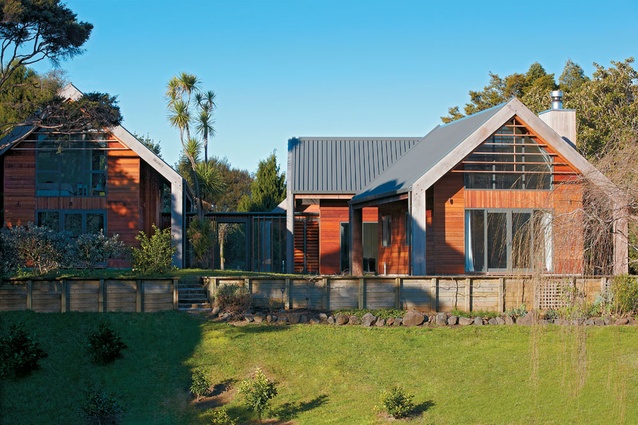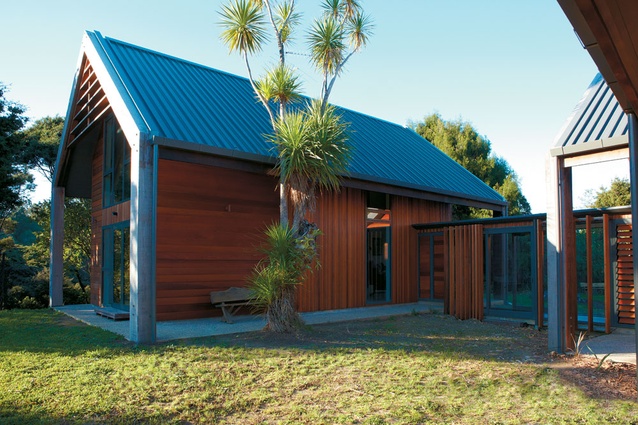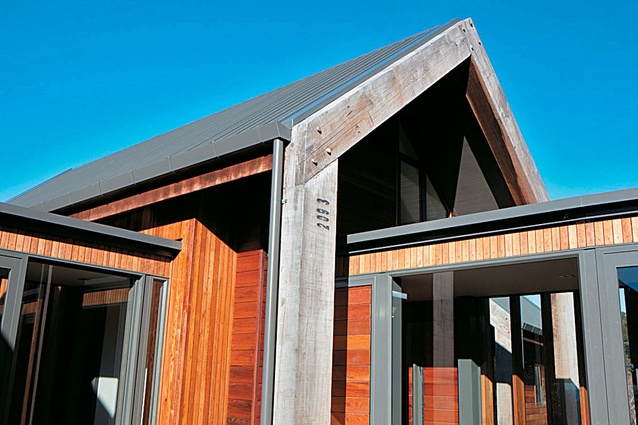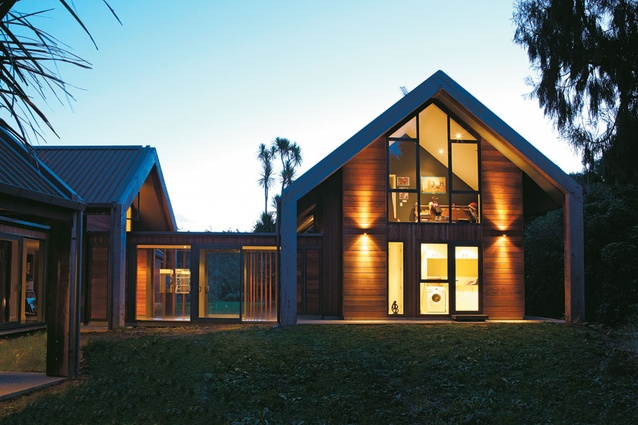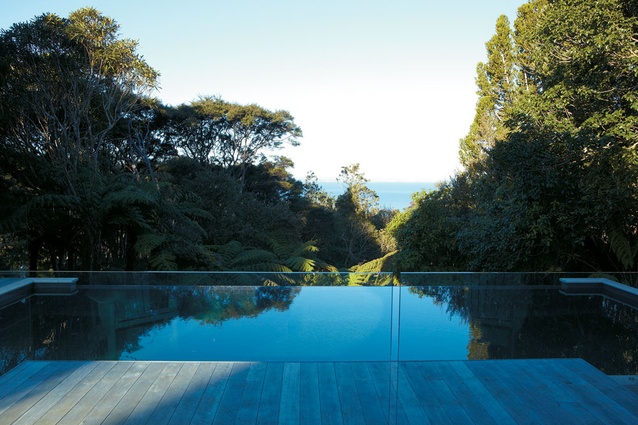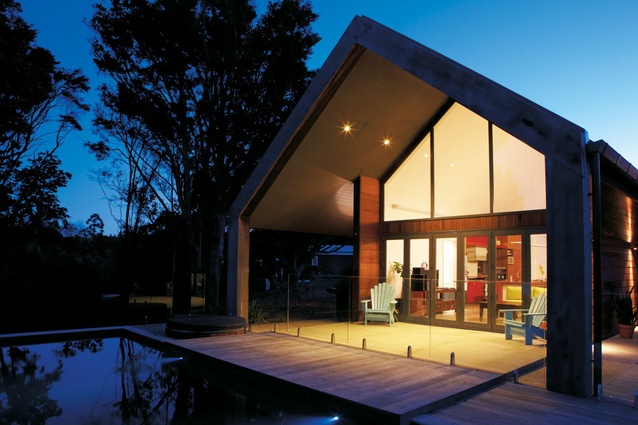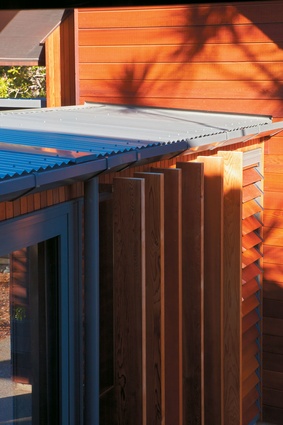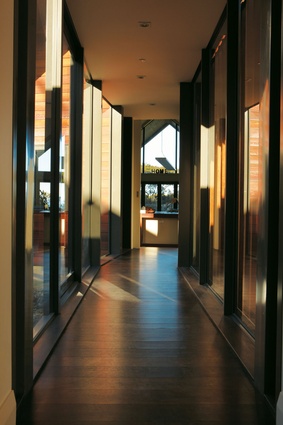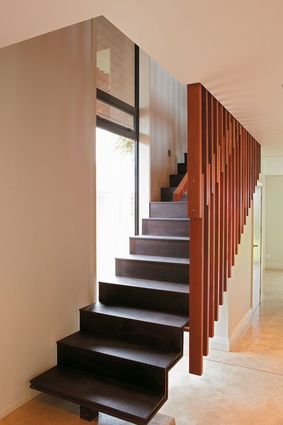Houses Revisited: Parau house
A series of solid buildings are lightly linked in this west Auckland house, designed by Context Architects, first published in 2011.
The owners of this west Auckland house, designed by Context Architects, had lived on the site for seven years in two old army barracks and a cottage. They knew the new house needed to create protected outdoor spaces to avoid the spring winds. They wanted a house that had a rustic but contemporary look and feel. From this the architect, Stephen Voyle, came up with a plan made up of a series of tent-like pavilions. These are linked together with thin, light hallways.
There are four pavilions, made of heavy Pacific Jarrah. The portals are solid rough sawn 400x300mm sections that were cut and milled in a South American forest and then designed to be grounded into the earth. They are impressive at double height and act as strong visual anchors for the tent forms of the buildings.
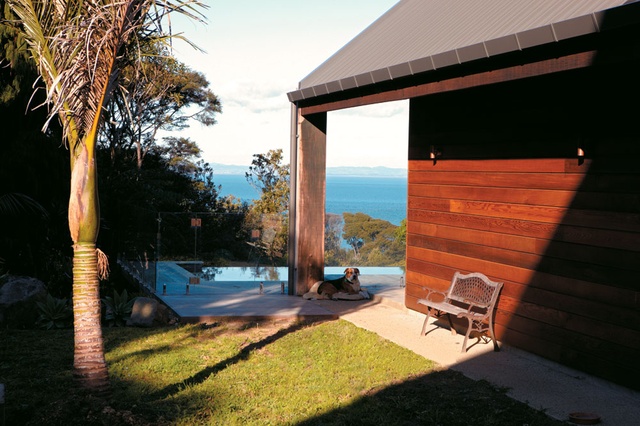
The first is a double height entryway, with a waiting/sitting room tucked behind a display wall. On the east side of the hall a linkway leads to a large open plan pavillion with the kitchen, dining and living spaces. The timber used in this room is the same as the exterior, creating warmth and a nice visual connection. The clients were interested in the use of good materials that would wear well and weather nicely.
Above the display wall in the entry hall is a mezzanine office that can be reached via a cleverly stepped and very steep staircase. On the west side of the hall is a link to the lounge that serves as a cosy winter space.
The third pavilion houses is the sleeping wing. There are two bedrooms on the west side. They both look out onto a green native bush setting. On the other, east side of the house, the bedroom enjoys spectacular views out to the sea.
The house has a feeling of solid permanence and shelter while still being lightly linked, and light throughout.
Click here to see more Houses Revisited. And sign up to our email newsletters to receive Houses Revisited straight to your inbox.
Note: These are stories from our archives and, since the time of writing, some details may have changed including names, personnel of specific firms, registration status, etc.

